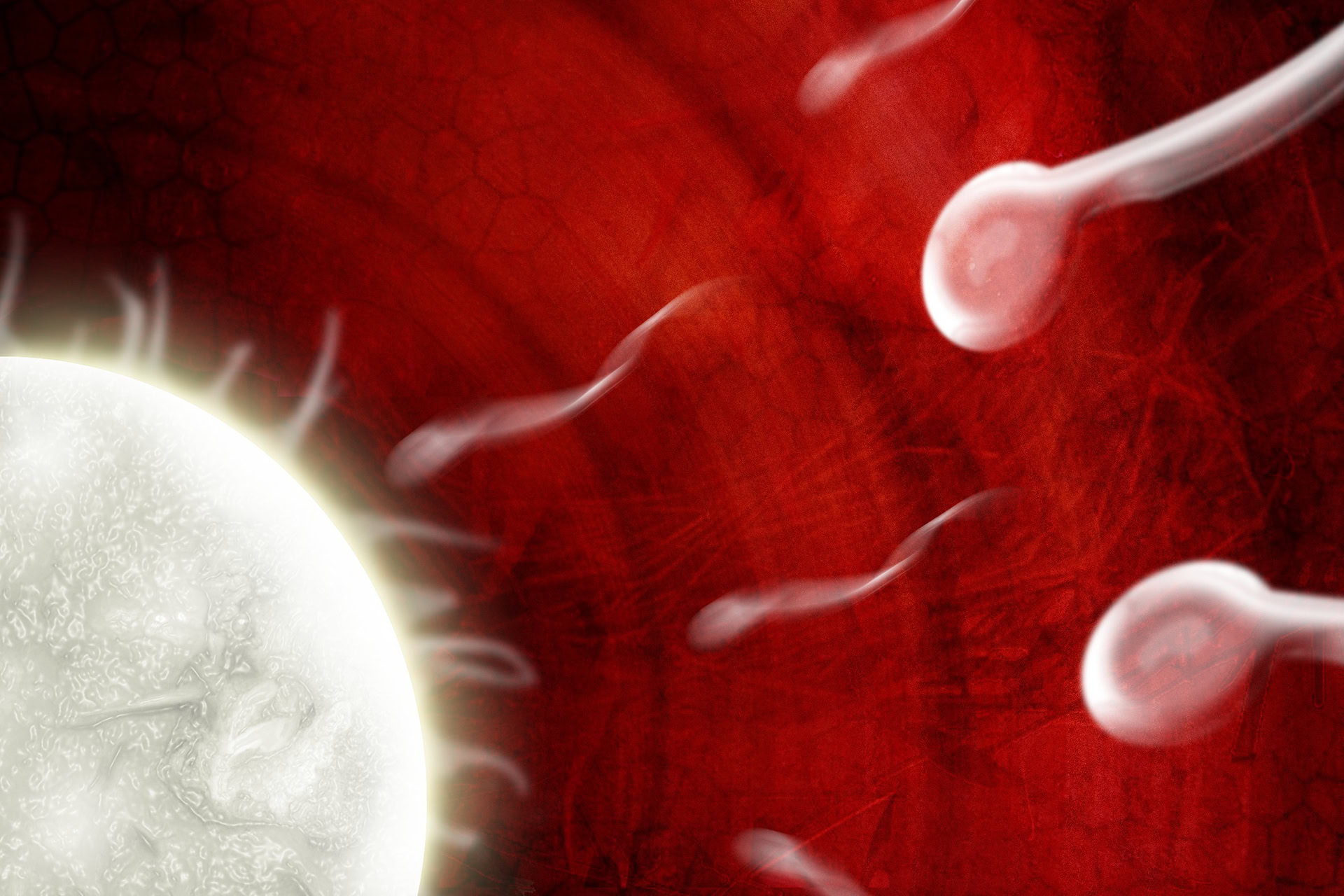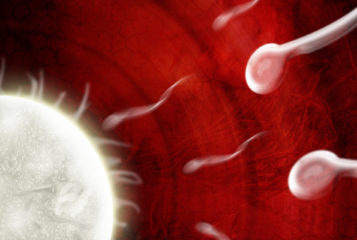An acute shortage of donor sperm is diminishing the capacity of the UK's public and private health sectors to treat infertility, resulting in growing concern and lengthening waiting lists at clinics. The shortage is widely attributed to the removal, in 2005, of entitlement to donor anonymity. The Progress Educational Trust, with support from the Royal Society of Medicine and the British Fertility Society (BFS) staged a panel discussion on Thursday 25 June 2009 entitled 'Banking Crisis - what should be done about the sperm donor shortage?' to address the problem and to promote steps forward.
The event was chaired by Professor Emily Jackson, from the London School of Economics and Deputy Chair of the HFEA (Human Fertilisation and Embryology Authority), and the panel consisted of leading figures in the fertility sector: Mark Hamilton, a Consultant in Obstetrics and Gynaecology in Aberdeen; Allan Pacey, a Senior Lecturer in Andrology at the University of Sheffield School of Medicine and Biomedical Sciences; Laurence Shaw, Associated Director of the London Bridge Fertility Centre; Laura Witjens, Chair of the National Gamete Donation Trust (NGDT); and Susan Golombok, Professor of Family Research at the University of Cambridge.
Mark Hamilton set the scene by illustrating how the number of donors registered per year has fallen from 500 in 1990 to 260 in 2005 and 307 in 2006. He emphasised that supply needs to meet demand, which, although decreasing in recent years, still far outstrips available sperm. The demand for donor insemination (DI ) in the UK is approximately 4000 patients per year, he said, which would require at least 500 sperm donors to be recruited each year. Allan Pacey then explained the difficulties faced by clinics in selecting sperm donors, which makes the problem of declining numbers of registered donors acutely worse. The acceptance rate of those who apply to donate sperm to those that are selected is only four per cent. The vast majority of applicants are rejected because of poor sperm quality (85 per cent) and others because of concerns about sexually transmitted diseases (7 per cent) or their genetic history (8 per cent).
It is easy hearing this to believe that the solution lies in the science of fertility treatment - and to a large extend this is true. Cryopreservation techniques are far from perfect but, as the panel expressed, it is unlikely these will be dramatically improved upon anytime in the near future. What is clear is that the sperm 'crisis' or 'problem' is immediate and requires prompt action if the will to tackle the issue is indeed genuine.
Yet the 'problem' is not solely that the fertility sector's efforts in meeting the needs of infertile couples is being undermined by a fundamental lack of available gametes but that the arguably dire situation of the industry is 'pushing' patients abroad. Britain was recently placed 11th out of 13 European countries in the number of IVF cycles performed per million population. This is bad for the industry and bad for the patients, say many commentators. For patients, the issue is both emotive and also exposes them to potential risks. Mark Hamilton highlighted that fertility tourism underpins the anguish of fertility patients - it is worth noting that patients would probably rather remain in the UK and be treated by British clinics than to travel abroad. Fertility treatment can be an emotionally as well as financially draining process.
So what to do about this? Two non-exclusive strands for reform emerged from the discussion. One approach is to reform the system of recruitment.
The other is one of communication and marketing: to tackle the attitudes surrounding sperm donation and the expectation of donors and end-users.
First, as Allan Pacey advocated, a national service framework that addresses the inadequacies of the recruitment system is required. How such a framework would look is unclear, and at this stage further discussions are necessary. The Department of Health will be and should be pragmatic and active in this area if such a goal is to be achieved. However, how radical any future reform will be may well determine the effectiveness of the solution.
Laurence Shaw was unequivocal about where he saw the solution to lie: sperm (and eggs for that matter) should be viewed as a commodity. A commodity in short supply increases its value - and, as Shaw said in the Guardian newspaper prior to the event: 'A restricted commodity adds value: pay higher prices or buy abroad.' Sperm donation in the UK is regulated as human tissue and therefore it is illegal to pay donors for their service with the exception of reimbursement for loss of earnings (up to £55.19 per day up to £250 per course of sperm donation). This removes the financial motivation for donating sperm and supporters argue that it affirms the notion of altruistic donation. However, put this in the economic backdrop of the fertility industry (patients can pay up to £8000 for IVF in the private sector), and the perspective that donation is a truly altruistic and non-financially rewarded experience is wholly unconvincing. The (economic) problem of the sperm shortage may have to be tackled with an economic solution.
The second approach is one of communication: promoting awareness of the problem and acknowledging the value of those involved, both patients and donors. Laura Witjens said that clinics should improve their 'customer service' roles when handling donors by respecting they are doing something altruistic (and potentially embarrassing). Speaking before the event, Laura Witjens pointed out that sperm donation means actually creating a human being. She told the Guardian: 'The ongoing message that sperm donation was wonderful and special was not matched by the care given to those same donors.' Greater sensitivity coupled with clarity may well be needed, but this is part of a wider issue of listening to donors, patients and donor-conceived people alike.
One of the major reasons for removing donor anonymity in 2005 was that donor-conceived children often express a desire to know their biological parents and it would be unfair to deny them of this opportunity. But what of the donors - who, as Susan Golombok points out, often find the whole process of discovery overwhelming? Or the patient's own expectations and 'right' to a stable family life?
The sperm shortage 'crisis' will not be solved by pursuing one solution over another but requires a coordinated effort and decent communication between all stakeholders. This is precisely what this discussion managed to demonstrate. A large dose of realism to really look at what is at issue and a readiness to readdress politically sensitive areas such as financial incentives may well be necessary. The question is as ever one of balance. Of course the 'crisis' can be solved as readily as it has come about but not everyone will be happy with the solution. There will need to be compromises along the way but this slows down the process and can arguably make the original goals unattainable.
In my own opinion, if funding for IVF on the NHS remains inadequate it is unethical to impose stringent regulations on the private sector which in the current situation is arguably able to meet the demands of infertile patients but for this constraint. A less paternalistic approach would avoid the need for consensus and allow patients, donors and clinics to agree on their own conditions for donation and donor-assisted conception as each individual situation dictates. A national framework can still facilitate such an approach but if the goal of a uniform policy is to be pursued it very much becomes a question of on whose interests are more prominent — if any. Be it noted, after all, it is patients who will ultimately lose out if the sperm shortage crisis is not corrected soon.






Leave a Reply
You must be logged in to post a comment.